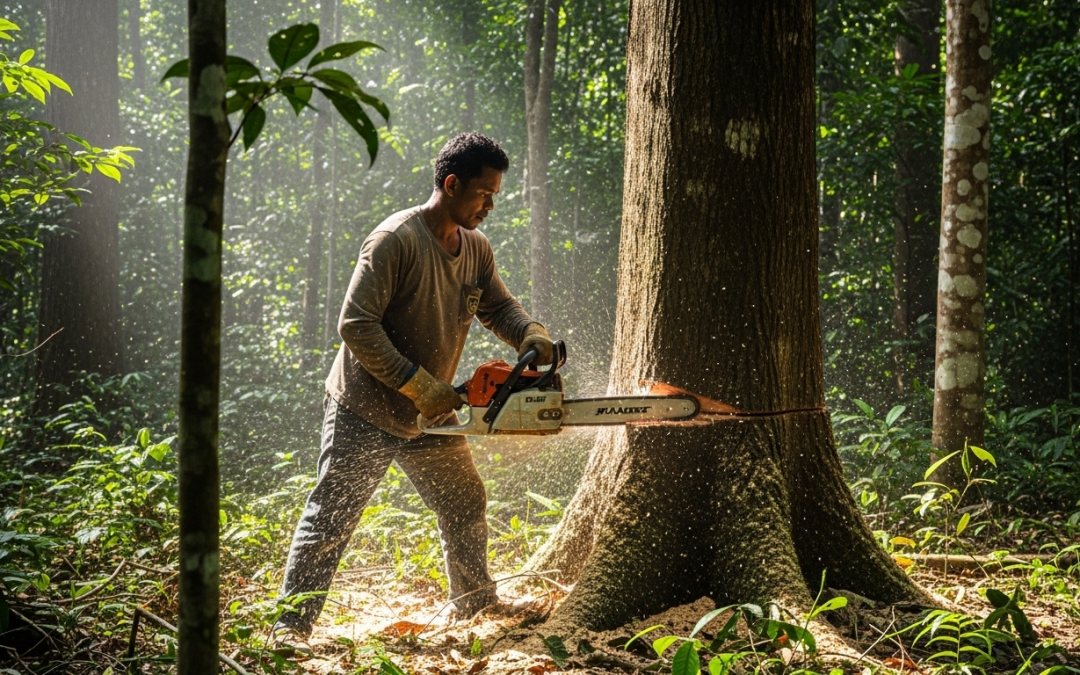For many individuals, the process of cutting down a tree is viewed as a straightforward—albeit unfortunate—necessity; however, in Malaysia, especially within the realms of commercial logging and development, it is far from being a casual affair. The act of cutting down a single tree, not to mention an entire forest, is subject to stringent regulations and oversight governed by a complex framework of national and state legislation, permits, and environmental guidelines aimed at protecting natural resources, maintaining ecological equilibrium, and ensuring public safety. Rather than simply using an axe, this procedure represents a meticulously organized system of legal, procedural, and environmental protections that seeks to reconcile the nation’s economic requirements with the critical need for forest preservation.
The Legal and Administrative Framework
Federal–State roles. Land and forests fall primarily under state jurisdiction as set out in the Federal Constitution. To promote consistency, the federal government provides a common legal backbone through the National Forestry Act 1984 (NFA), which guides sustainable forest management across Peninsular Malaysia.
Permanent Reserved Forests (PRF). The NFA classifies forests—most notably PRFs—by function (e.g., timber production, soil and water protection, biodiversity conservation), ensuring harvesting occurs only where—and how—it is legally and ecologically appropriate.
State Forestry Departments. While the NFA sets the tone, State Forestry Departments implement it on the ground: administering and controlling forest harvesting, issuing licenses and permits, collecting royalties, and developing wood-based industries. In practice, they are the gatekeepers of who may cut, what, where, and when.
The Regulatory Framework
Licensing and Permits
All activities involving tree felling—whether conducted in forests, on state land, or on private property—necessitate a valid license or permit granted by state authorities or local councils. The application process typically requires information regarding the location, species, and intended purpose, and may necessitate site inspections prior to approval. Unauthorized tree cutting, irrespective of the scale, is classified as a forest offense and may result in significant legal repercussions.
Tree Protection Orders and Urban Regulations
In metropolitan regions, local planning authorities have the ability to prevent tree removal through Tree Protection Orders (TPOs) or by imposing protective conditions within planning permissions. Specific species or trees that hold considerable environmental, cultural, or social significance receive additional safeguards under these laws, rendering unauthorized removal a punishable offense.
Size and Species Restrictions
Not every tree is equally vulnerable to being cut down. There are established minimum diameter thresholds—typically 50cm for non-dipterocarp species and 60cm for dipterocarp species—to safeguard immature or ecologically significant trees. Trees that are protected, including mother trees, those that provide fruit for wildlife, or endangered species, are completely prohibited from being felled, unless explicitly authorized by the relevant authorities.
Environmental Buffer Zones
Regulations require the establishment and adherence to buffer zones adjacent to riverbanks, steep inclines, and other delicate ecological regions. The purpose of these regulations is to safeguard water quality, avert erosion, and preserve biodiversity. The cutting down of trees in these zones is strictly controlled or completely banned.
Penalties for Violations
Stiff Fines and Jail Terms
Convictions for illegal tree cutting may lead to fines reaching RM10,000 or imprisonment for a maximum of three years—or both—according to the National Forestry Act and its amendments, with stricter penalties introduced after recent legislative changes. Repeat offenders and those involved in large-scale violations face fines that can soar to RM200,000 or prison sentences of up to ten years, particularly in cases involving permanent reserves or protected products.
Confiscation and Further Actions
Offenders may additionally encounter the confiscation of their equipment, vehicles, and timber, and may be liable for compound penalties or civil lawsuits alongside criminal prosecution.
Why Strict Regulation Matters
Protecting Malaysia’s Forests:
These regulations play an essential role in preventing illegal logging, preserving biodiversity, and guaranteeing sustainability for future generations. The forests of Malaysia are abundant in unique plant and animal species, and uncontrolled logging endangers both wildlife and the surrounding communities.
Environmental and Social Safeguards:
Tree cutting extends beyond mere economic considerations; it affects water systems, air quality, landscape stability, and urban aesthetics. Through the implementation of stringent regulations, Malaysia seeks to harmonize developmental requirements with environmental responsibility, preventing the indiscriminate use of “the axe.”
Conclusion
In Malaysia, the act of tree felling is a regulated privilege rather than a commonplace occurrence. The collective influence of federal laws such as the NFA 1984, state-level licensing and enforcement, urban protections like TPOs, restrictions on species and diameter, buffer-zone regulations, and EIA requirements establishes a framework that emphasizes ecological integrity and public safety in conjunction with legitimate development needs.
Compliance is not merely a legal requirement; it also protects biodiversity, water resources, slope stability, and community welfare while promoting sustainable forestry and responsible land use. Individuals planning to remove trees should initiate their plans early, consult the appropriate authorities, obtain the necessary approvals, and hire qualified professionals to carry out the work. On the other hand, disregarding these regulations can lead to severe penalties and jeopardize long-term conservation objectives. By treating each tree removal as a documented and accountable process, Malaysia can continue to achieve economic growth while safeguarding the forests that support it.

